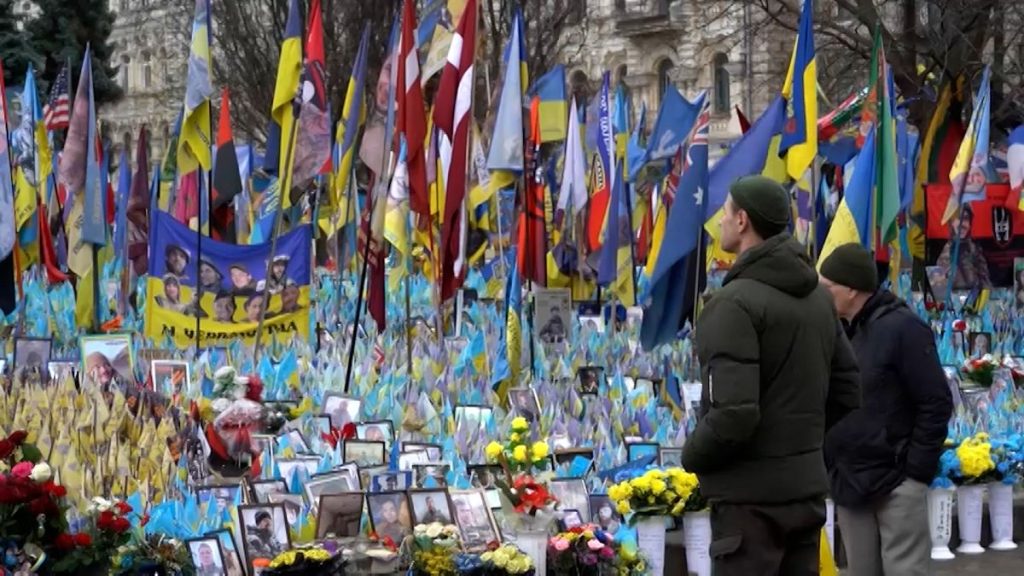Ukraine’s relentless conflict with Russia has entered its fourth year, and a critical challenge looms large: the increasing difficulty of mobilizing new soldiers. The initial surge of volunteers, driven by patriotic fervor to defend their homeland, has significantly dwindled, leaving the Ukrainian armed forces grappling with a growing manpower shortage. The urgency to reinforce exhausted troops on the front lines is paramount, but a rising tide of draft avoidance among Ukrainian men complicates the situation.
The Ukrainian government has launched extensive campaigns to encourage enlistment, plastering billboards across Kyiv and utilizing online platforms to reach potential recruits. Army brigades have been granted direct recruitment authority, intensifying mobilization efforts. Despite these endeavors, the initial enthusiasm for voluntary service has waned, replaced by a palpable reluctance among many men to join the fight. This shift in sentiment is fueled by several factors, including the fear of forced conscription, the lack of clear demobilization terms, reports of corruption within the military, and controversial recruitment tactics. The pervasive uncertainty surrounding the war’s duration and the grim reality of casualties further contribute to this growing resistance.
Stories of men like “Aslan,” a pseudonym used to protect his identity, illustrate the lengths to which some are going to avoid conscription. Once an active member of his community, Aslan now confines himself largely to his home, constantly monitoring his phone for videos showcasing soldiers stopping vehicles, checking documents, and detaining men eligible for military service. He acknowledges the necessity of mobilization to defend Ukraine but criticizes the current methods employed, arguing that the process should be democratic, based on fair conditions, proper training, and specialized military roles. The fear of being forcibly conscripted and sent to the front lines without adequate preparation is a driving force behind his evasion tactics.
The fear is not unfounded. Many Ukrainians harbor deep anxieties about being deployed to the front lines and never returning. This fear is compounded by reports of corruption within the recruitment process, fueling distrust and discouraging voluntary enlistment. The lack of clear demobilization terms adds to the uncertainty, leaving potential recruits apprehensive about the length of their service and the possibility of being indefinitely trapped in the war. Nazar, a real estate agent in Kyiv, shares a similar story of avoidance, limiting his movements to minimize encounters with recruitment patrols. He paints a grim picture of his social circle, describing the stark choices his friends have faced: fleeing the country through bribes or forged documents, returning home in coffins, or continuing to fight on the front lines.
This growing resistance to conscription poses a significant obstacle to Ukraine’s war effort. While President Zelenskyy has claimed that approximately 43,000 Ukrainian soldiers have been killed in the fighting, estimates suggest that the actual number is considerably higher. The sea of Ukrainian flags in Kyiv’s Maidan Square stands as a somber testament to the immense human cost of the ongoing conflict. Despite the mounting losses, the government aims to recruit 200,000 more soldiers this year, a target that appears increasingly challenging to achieve given the widespread avoidance of conscription. The government’s efforts to improve recruitment conditions, including addressing concerns about corruption and establishing clearer demobilization procedures, have yet to yield significant results.
As Ukraine prepares for another year of war, the struggle to mobilize new troops has emerged as a crucial battlefront in its own right. The dwindling pool of volunteers, coupled with the increasing resistance to conscription, underscores the urgent need for a more effective and equitable recruitment strategy. Failure to address these challenges will further strain the already overburdened Ukrainian armed forces, potentially jeopardizing the country’s ability to defend itself against the ongoing Russian aggression. The human cost of the war continues to rise, and the need for a decisive, sustainable solution to the mobilization crisis becomes ever more critical.

